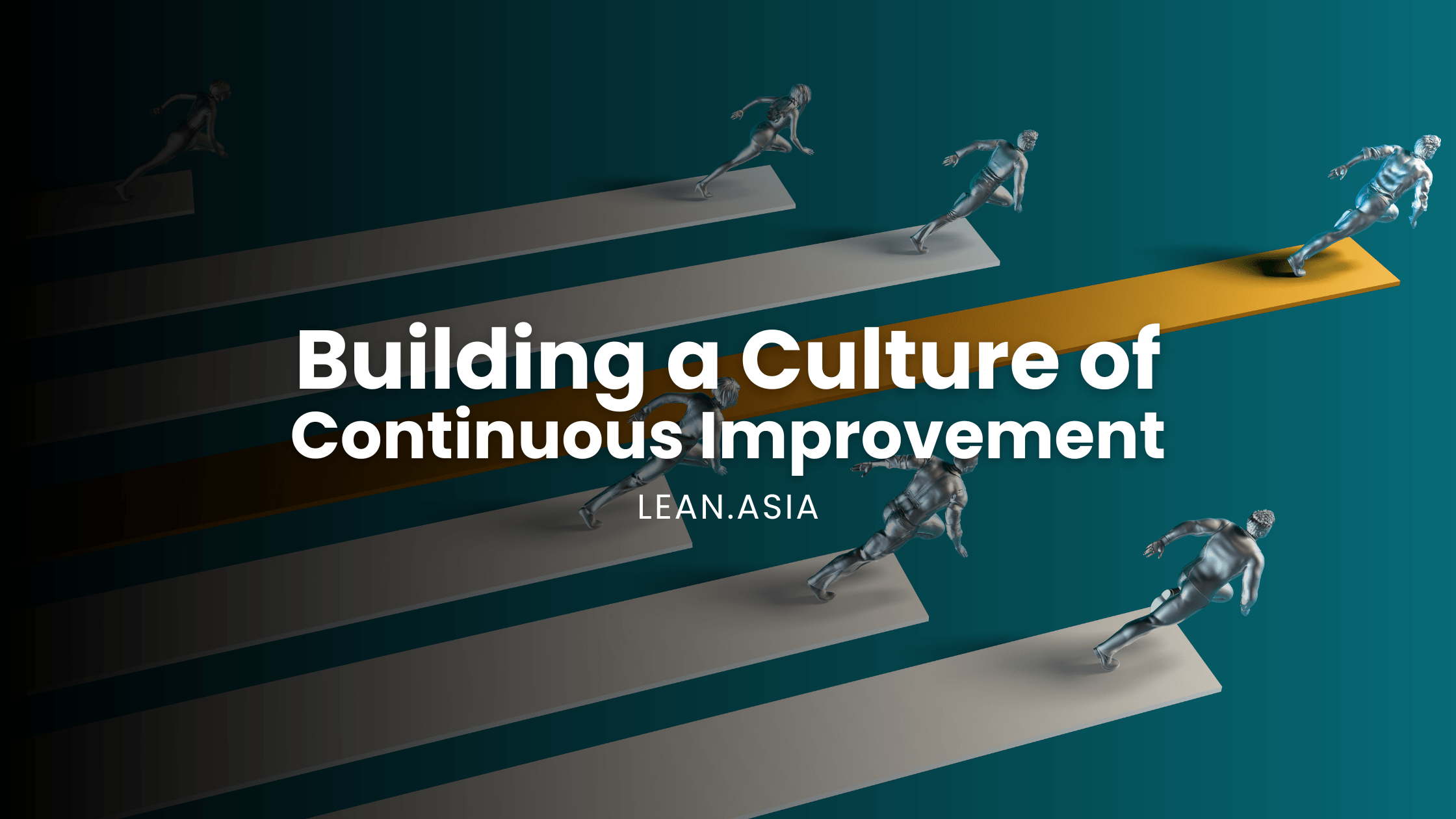In today’s fast-paced and ever-changing business landscape, organizations that embrace a culture of continuous improvement are more likely to thrive and succeed. A culture of continuous improvement fosters innovation, drives efficiency, and empowers employees to contribute to the growth and success of the organization. In this blog post, we will explore the importance of building a culture of continuous improvement and provide you with best practices and strategies to implement within your organization.
Introduction
- Definition of a culture of continuous improvement: Introduce the concept of a culture of continuous improvement, which involves an organization’s commitment to consistently seeking opportunities for improvement in all aspects of its operations.
- The significance of fostering such a culture in today’s business environment: Highlight the benefits of continuous improvements, such as staying ahead of the competition, adapting to market changes, and enhancing customer satisfaction.
Benefits of a Culture of Continuous Improvement
- Enhanced innovation and problem-solving capabilities: Explain how a culture of continuous improvement encourages employees to think creatively, challenge the status quo, and come up with innovative solutions to problems.
- Increased efficiency and productivity: Describe how ongoing improvement efforts streamline processes, eliminate waste, and optimize resource utilization, resulting in improved efficiency and productivity.
- Improved quality and customer satisfaction: Emphasize how continuous improvement leads to higher product and service quality, meeting and exceeding customer expectations, and building customer loyalty.
- Employee engagement and empowerment: Highlight the positive impact of involving employees in improvement initiatives, giving them a sense of ownership, and empowering them to contribute their ideas and expertise.
- Adaptability to change and market dynamics: Discuss how a culture of continuous improvement helps organizations respond effectively to changes in the market, customer needs, and industry trends.
Leadership’s Role in Driving Continuous Improvement
- Leading by example: Emphasize the importance of leaders demonstrating their commitment to continuous improvement through their actions, behaviours, and decision-making.
- Communicating the vision and values: Explain how leaders should clearly communicate the importance of continuous improvement and align it with the organization’s overall vision and values.
- Providing resources and support: Highlight the need for leaders to allocate necessary resources, such as time, budget, and training, to support improvement initiatives.
- Recognizing and rewarding improvement efforts: Discuss the significance of acknowledging and rewarding employees’ contributions to continuous improvement to foster a culture of recognition and motivation.
Engaging Employees in the Process
- Creating a safe and open environment for idea sharing: Describe the importance of establishing a culture that encourages employees to voice their ideas, suggestions, and concerns without fear of judgment or reprisal.
- Encouraging cross-functional collaboration: Explain the benefits of involving employees from different departments or teams in improvement initiatives, fostering diverse perspectives and creative problem-solving.
- Empowering employees to take ownership of improvement initiatives: Discuss the importance of empowering employees to identify and lead improvement projects, giving them a sense of responsibility and accountability.
- Providing training and development opportunities: Highlight the need to invest in employee training and development programs to enhance their skills, knowledge, and understanding of continuous improvement methodologies and tools.
Setting Clear Goals and Objectives
- Defining measurable targets for improvement: Explain the significance of setting specific, measurable, attainable, relevant, and time-bound (SMART) goals to provide a clear direction for improvement efforts.
- Aligning improvement initiatives with strategic objectives: Describe how improvement initiatives should be aligned with the organization’s broader strategic objectives to ensure focus and relevance.
- Breaking down goals into smaller, achievable milestones: Discuss the importance of breaking down larger goals into smaller, manageable milestones to track progress and maintain momentum.
Implementing Continuous Improvement Methodologies
- Lean Six Sigma: Explain the principles of Lean Six Sigma, which combines lean principles for waste reduction and Six Sigma for process variation reduction, to achieve high-quality, efficient processes.
- Kaizen: Describe the philosophy of Kaizen, which focuses on making small, incremental improvements on a continuous basis, involving all employees at all levels.
- PDCA (Plan-Do-Check-Act): Explain the PDCA cycle, a systematic problem-solving approach involving planning, implementing, evaluating, and adjusting improvement initiatives.
Gathering and Analyzing Data
- Establishing key performance indicators (KPIs) to measure progress: Discuss the importance of defining relevant KPIs to track and evaluate improvement efforts objectively.
- Collecting relevant data to identify improvement opportunities: Explain the significance of collecting and analyzing data related to processes, customer feedback, and performance metrics to identify areas for improvement.
- Using data analysis tools to gain insights and make informed decisions: Highlight the role of data analysis tools, such as process mapping, value stream mapping, and statistical analysis, in identifying improvement opportunities and guiding decision-making.
Encouraging a Learning and Growth Mindset
- Emphasizing the importance of learning from failures and mistakes: Explain how failures and mistakes should be seen as learning opportunities, encouraging employees to reflect, learn, and apply their newfound knowledge to future improvement efforts.
- Promoting a culture of experimentation and risk-taking: Discuss the significance of creating an environment where employees are encouraged to explore new ideas, take calculated risks, and learn from both successes and failures.
- Providing opportunities for continuous learning and development: Highlight the importance of investing in employee training programs, workshops, conferences, and mentorship opportunities to foster a culture of continuous learning and development.
Celebrating Success and Sharing Best Practices
- Recognizing and rewarding achievements and improvements: Discuss the importance of celebrating successes and recognizing individuals and teams for their contributions to continuous improvement.
- Sharing success stories and lessons learned: Emphasize the value of sharing success stories and lessons learned from improvement initiatives to inspire and motivate others.
- Encouraging knowledge sharing and cross-departmental collaboration: Explain how fostering knowledge sharing and collaboration across different departments or teams can lead to the adoption of best practices and the spread of improvement efforts.
Continuous Improvement as a Journey, Not a Destination
- Emphasizing the long-term nature of continuous improvement: Highlight that continuous improvement is an ongoing process and mindset, not a one-time project or initiative.
- Encouraging ongoing reflection and refinement: Discuss the importance of regularly reflecting on improvement efforts, identifying areas for further refinement, and adapting to changing circumstances.
- Embracing change and adapting to new opportunities and challenges: Explain how a culture of continuous improvement requires organizations to be open to change, flexible in their approach, and responsive to new opportunities and challenges.
Conclusion
- Recap of the importance of building a culture of continuous improvement: Summarize the key points discussed and reiterate the benefits of a culture of continuous improvement for organizational success.
- Encouragement to implement best practices and strategies discussed: Encourage readers to apply the best practices and strategies outlined in the blog post within their own organizations.
- Highlighting the transformative impact of a culture of continuous improvement on organizational success: Reinforce the idea that building a culture of continuous improvement is a transformative journey that can drive innovation, efficiency, and growth in organizations.
By building a culture of continuous improvement, organizations can create a positive and dynamic work environment where innovation, efficiency, and growth flourish. It requires strong leadership, employee engagement, clear goals, and the implementation of proven methodologies. Embrace the journey of continuous improvement, and watch your organization thrive in today’s competitive business landscape.





One Response